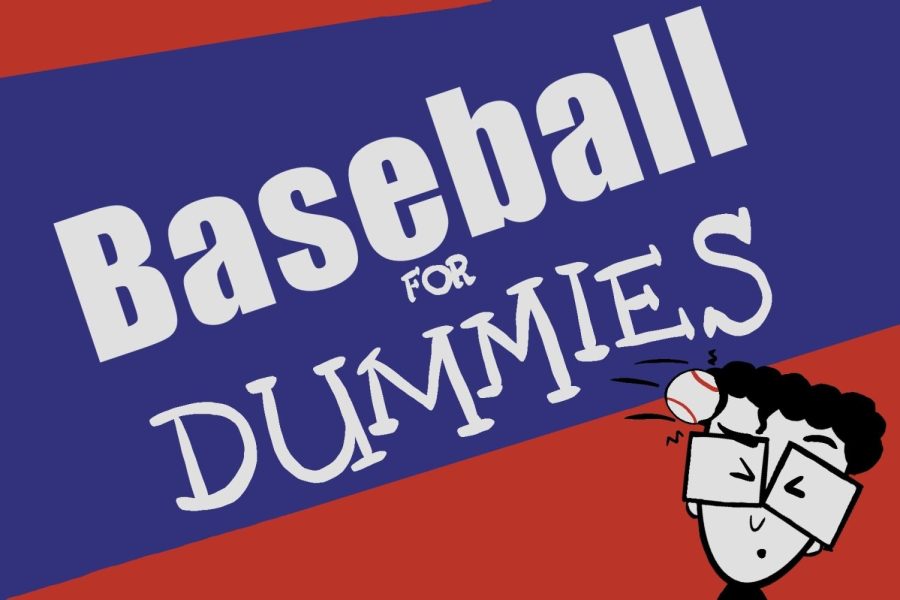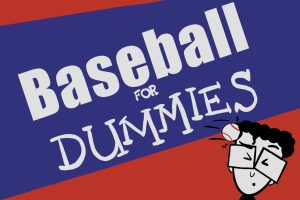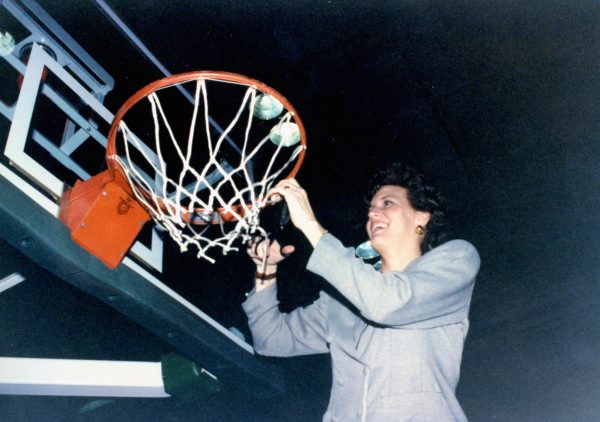Analysis: Baseball stats for dummies
February 22, 2023
Baseball is very analytically driven and can be confusing to people who are trying to get into the sport. Here are some basic terms and statistics that can help newcomers better understand the sport.
Terminology
Before getting into the statistics, there is some baseball terminology that needs to be known by anyone looking to talk about it.
Major League Baseball
Major League Baseball is the highest level of baseball in the world. The MLB is split into two different leagues, the National League and the American League, which have three different divisions. The divisions have the same names in both leagues: East, Central and West. These divisions each have five teams, giving the league 30 total teams. The closest team to USI is the St. Louis Cardinals. Check out the other MLB teams and how the leagues and divisions are divided here.
Inning
An inning is a section of a baseball game in which both teams take a turn to bat. An inning starts with the visiting team batting and the home team fielding. When the home team records three outs, they switch to hitting. After switching, the visiting team has to get three outs against the home team. They then switch again, but an inning only counts once both teams have gotten the chance to bat.
There are nine innings in a baseball game unless the teams tie after the ninth inning. In this case, the game would go into extra innings, where both teams get a chance to score against each other. This goes on until one of the teams is leading after the inning is over. When one team is leading after the ninth inning, the game ends with the leading team being named the winner.
Plate Appearances
Plate appearances are one of the most basic aspects of baseball. A plate appearance occurs every time a batter steps into the batter’s box to face a pitcher.
At-Bats
Its name gives the impression that it is as simple as how many times the player comes up to bat, at-bats are a little more complicated. The only time an at-bat counts as a statistic is when the batter’s plate appearance ends in a hit, an error or an out. When a player walks, gets hit by the pitch or a sacrifice fly happens, the statistic is not counted.
Strike Zone
The strike zone is commonly referred to by the width of the home plate and the distance between the batter’s knees and the middle of their chest. This means that the strike zone has different heights for each player, but always the same width. Someone who is 6’7” has a much larger strike zone than a player who is 5’6”.

Balls
A ball occurs when the pitcher does not throw a pitch into the batter’s strike zone. This is up to the discretion of the umpire because the strike zones vary between each batter.
Strikes
A strike occurs when a pitcher does throw a pitch into the batter’s strike zone. Just like with balls, called strikes are up to the discretion of the umpire. However, a strike is also called when a batter swings at a ball and does not make contact with it.
Foul
A foul ball happens in almost every at-bat. When a batter hits the ball but it does not go into the field of play. When a foul ball occurs the batter is called for a strike unless they already have two strikes.
If a foul ball is hit into the air and is able to be caught by any fielder without interference, it counts as an out. The only time this is not applicable is on what is called a “foul tip”. This occurs when the batter makes the slightest contact with the ball and it does not affect the change in direction of the ball significantly. A foul tip can only count towards an out if it is caught by the catcher when the batter already has two strikes.
Outs
Outs are the most common outcome for a batters at-bat. An out is any outcome that does not result in the batter ending up on a base or hitting a home run. There are many different ways for a batter to get out, whether it is a ground out, fly out, line out or strike out A ground out is a term that refers to any time a batter hits the ball and it travels on the ground to any of the infielders, who then throw it to the first baseman before the batter gets to first base.
A line out and fly out go hand in hand with each other. Both happen when a batter hits the ball in the air and a fielder catches it. A fly out is usually called when the ball is hit higher in a more arching manner, and a line out is called when the ball is hit with less arch and more on a line which is why it is called a line out. The difference between the two is at the discretion of the scorebook keeper.
Strikeouts
Strikeouts occur either when the pitcher throws three strikes before they throw four balls or the batter puts the ball in play. Strikeouts also count toward both batter and pitcher statistics to record the number of times a pitcher strikes out a batter and how often a batter strikes out.
Hits
Hits are some of the easiest terminologies to learn. A hit is any time a batter puts the ball into the field of play, and it does not result in an out or the defense does not commit an error.
Double Play
Double play refers to a play in which the defense gets two outs in a single play. There are many different ways a team can get two outs. Possibly the most common double play is when there is a runner on first base, the current batter hits the ball onto the ground, and the ball gets fielded and thrown to second base, resulting in a force out at second. The player who received the ball at second base then throws it to the first baseman before the batter gets two first.
Sacrifice Flies
The term sacrifice fly is used when a batter hits a fly ball to the outfield with a runner on third base. The runner stands on the base until the outfielder catches the batted ball, making the batter out. Once the fielder catches the fly ball, the third-base runner attempts to get to home plate before the outfielder throws the ball home, and the catcher tries to tag the advancing runner.
It is important that the runner stays on third base until the outfielder has caught the ball because, if they break for home plate early, the fielders can throw the ball to third. As long as the ball gets to the base, the runner will be out.
Walks
A walk, also known as “a base on balls,” happens when the pitcher throws four balls before three strikes. The difference between a called ball and a called strike is up to the discretion of the umpire. A ball is when the pitcher does not throw into this zone, and a walk is when this happens four times to a one batter. A walk results in the batter being able to advance to first base, and every runner already on base is allowed to advance if there is a runner on the base behind them.
Walks are a statistic for batters that affect other statistics in evaluating how effective of a hitter they are.
Runs Batted In
Runs Batted In Runs batted in is a commonly known baseball statistic known as RBIs. RBIs are a simple way to tell how often a player is able to score the runners that are on base when they come up to bat. To record an RBI, a batter has to come up to bat and either get a base hit, a walk or hit a sacrifice fly. The only instances where a batter does not get credited for an RBI when a runner scores off their batted ball is when a fielder either makes an error resulting in a run-scoring or the batter grounds into a double play. The RBI leader for the 2022 MLB season was Aaron Judge, New York Yankees right fielder, with 131 RBIs.
Hit By Pitch
Hit-by-pitch is exactly what it sounds like. An HBP occurs when a pitcher pitches a ball that hits a batter. In this event, the batter goes to first base, and if other runners are forced to go forward, they will. However, there are some rules that apply to this. For example, if a batter leans into the pitch and it hits them, they are not allowed to go to first, and the pitch is counted as a strike. Whether a batter leans into the pitch or not is up to the discretion of the umpire.

Batting Statistics
Batting statistics are only used when talking about the batting side of the game. These are commonly used to discuss how effective a player is at the plate. When talking about how good a player is, most baseball fans bring up batting statistics, so these will help any new baseball fan have conversations with veteran ones.
Batting Average
Formula: Hits ÷ At-Bats
Batting average is the most basic statistic for hitters. This statistic is found by taking the total number of hits a player has during a season and dividing it by the number of total at-bats. For example, with 174 hits in 533 at-bats, Jeff McNeil, New York Mets second baseman, was the MLB leader in batting average, hitting .326.
Batting average is often used by more casual baseball fans. This is because people who dive into analytics dislike how batting average does not take into account walks and errors into the equation; it also treats all hits the same, whether it is a home run or a single batting average.
On-Base Percentage
Formula: (Hits+Walks+HBP) ÷ (At-Bats+Walks+HBP+Sacrifice Flies)
On-base percentage is used to determine how often a batter reaches base safely. This statistic takes into account things that batting average does not, such as walks and HBP.
Baseball fans like to use this statistic more than batting average, but it is still not perfect for everyone as it has some of the same issues as batting average. OBP does not decipher between different types of hits, so while a lot of people think it is a better representation than batting average, it does have weaknesses.
Slugging Percentage
Formula: ((1*amount of singles)+(2*amount of doubles)+(3*amount of triples)+(4*amount of home runs)) ÷ At-Bats
Slugging percentage holds a lot more weight than batting average or OBP to the result of the hit. With more bases, a batter’s hit carries more weight. For example, if a batter hits a double, it will count twice as much then if they just hit a single.
This statistic is used for measuring the power of a hitter more than how much they just get on base. Some baseball fans do use this statistic in regular conversation, but often it will only be used in direct correlation with comparing players’ power.
On-Base Plus Slugging Percentage
Formula: OBP+SLG
As the name of the statistic would imply, On-base plus slugging percentage is the combination of OBP and slugging percentage. This statistic is one of the most commonly used in baseball conversation, as it combines how much power a player has and how often they get on base.
On-Base Plus Slugging Percentage Plus
Formula: 100*((OBP ÷ league average OBP)+(SLG ÷ league average SLG)-1)
On-Base Plus Slugging Percentage Plus+ is arguably the most useful statistic when discussing batters because it accounts for the different ballparks that the players play in. Taking the league averages of both OBP and SLG, it allows for the standardization of the number across the league.
When discussing OPS+, it is important to remember the league average is exactly 100, so 50% of the MLB is above and below. If someone has a 150 OPS+, they are 50% better than the league-average hitter. The MLB leader in the 2022 season was Judge with 211, making him 111% better than the league average hitter.
Batting Average on Balls in Play
Formula: (Hits-Home Runs) ÷ (At Bats-Strike Outs-Home Runs+Sacrifice Flies)
Batting average on balls in play is one of the statistics referred to as “advanced analytics” because it is not commonly used in the casual baseball community. BABIP is used to help determine how often the batter gets on base from balls they put into play. This statistic takes out home runs because the defense is unable to get the batter out on that play.
Pitching Statistics
Some statistics are only used when talking about pitchers. These statistics are ones baseball fans will commonly use when discussing different pitchers.
Earned Run Average
Formula: 9*Earned Runs ÷ Innings Pitch
Earned run average is the most common statistic when talking about pitchers. It takes the amount of earned runs scored against a pitcher and then multiplies it by nine to make it how many would be scored over an entire game. Then, it gets divided by the total number of innings pitched by the pitcher over the course of a season The lower the number the resulting number, the better the statistic is.
Earned Run Average Plus
Formula: 100*(league average ERA ÷ ERA)
ERA+ is one of the favorite statistics for people to use when talking about the effectiveness of certain pitchers. Just like with OPS+, ERA+ takes the ballpark that the player pitches at into consideration. Like OPS+,100 is the league average of ERA+, so 150 is 50% better than the average.
Walks and Hits Per Inning
Formula: (Walks+Hits) ÷ Innings Pitched
Walks and hits per inning is a very common statistic to help evaluate the success of pitchers. This statistic takes the total number of base runners allowed and divides that by the total number of innings pitched. If a pitcher has a WHIP of 1.00, it means on average the pitcher allows one base runner per inning. The lower the number, the more effective the pitcher is.
Baseball is very difficult to get into if someone is new to it. This especially applies to the statistical side of the sport when people start bringing up numbers the casual fan may not understand. These terms and statistics are just the basics, and there is more to learn beyond this list. Anyone interested in baseball should try and learn more. Check out more baseball statistics here.

















